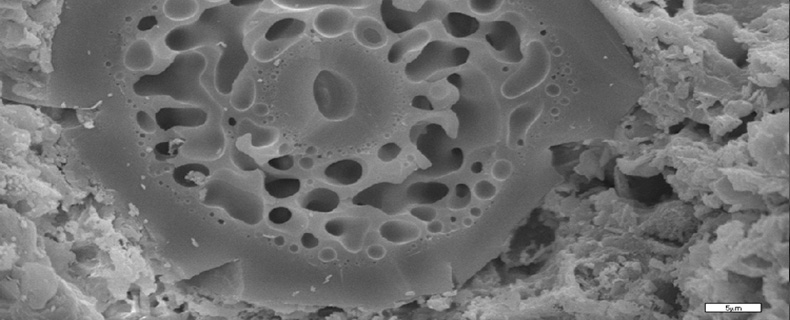| School |
Natural Sciences |
Academic Unit
|
Geology Department |
Level of Studies
|
Undergraduate |
Course Code
|
GEO_610E |
| Εξάμηνο σπουδών |
5ο |
Course Title
|
GIS and Remote Sensing in Applied Geology |
Independent Teaching Activities
|
Lectures, laboratory, Tutorial |
Weekly Teaching Hours
|
2 (lect.) / 1 (lab.)/ 1T |
| Credits |
3 |
Course Type
|
Field of Science (GIS & Remote Sensing) |
Prerequisite Courses
|
No |
Language of Instruction & Examinations
|
Greek |
Is the Course offered to Erasmus Students
|
Yes (in English) |
| Course Web-Page (URL) |
https://eclass.upatras.gr/courses/GEO307/ |
Learning Outcomes
|
The course aims at familiarizing students with geo spatial data and at introducing them in Geographic Information Systems and Remote Sensing technologies. By the end of this course the students will be able to:
- Distinguish the concepts of analogue and digital image and calculate the digital image statistical parameters.
- Distinguish the geographical data as vectors and rasters and information as spatial and non- spatial.
- Understand the interactions of electromagnetic radiation with materials and atmosphere.
- Study maps of Greece and to recognize the projection systems.
- Recognize the most common satellite images and to digitally process them.
- Use geographic and geological data in GIS environment, to process it and produce maps.
By the end of this course the student will, furthermore, have developed the following skills:
- Ability to demonstrate knowledge and understanding of basic concepts, about GIS and RS.
- Importing, storing, processing, managing satellite data with the use of specialized software.
- Enhancing the quality of images, creating colored composites and interpreting them.
- Implementing geometric correction, georeferencing and digitization of satellite images.
- Importing, storing, processing, managing geographic and geological data in GIS environment.
- Creation of DEM out of digitized contour lines and production of topographic and elevation profiles.
- Creating maps with the combined use of Geographic Information Systems and Remote Sensing data.
|
General Competences
|
- Searching, analysis and synthesis of facts and information, as well as using the necessary technologies
- Decision making
- Autonomous (Independent) work
- Work in an international enviroment
- Work in an interdisciplinary enviroment
- Work design and management
- Respect to natural environment
|
| Syllabus |
The course is organized in 4 teaching circles which are described below.
Circle Α:
- Analogue and digital image, histogram and image statistical parameters
- Theory of GIS, History, Structure.
- Raster and vector data, structure of GIS system, spatial and non spatial data, topolology.
- Sensors and platforms, electromagnetic spectrum.
- Interactions of electromagnetic radiation with materials and atmosphere.
Circle Β:
- Image classification. Supervised/ unsupervised multispectral classification.
- Spatial, radiometric, spectral, temporal resolution of Remote Sensing data.
- Digital image restoration, basic principles of image interpretation,, coloured composites, radiometric corrections, atmospheric correction of Remote Sensing data.
Circle C:
- Map Projection. Introductory concepts (geoid, spheroid, ellipsoid, geographic coordinates, datum, grid systems, types of projection, parameters).
- Hellenic Geodetic Reference Systems. Distortions, Mathematic models for geometric correction and resampling. Geometric correction of maps and satellite
Circle D:
- Mapping with the combined use of Geographic Information Systems and Remote Sensing data.
- Contour lines digitization, Digital Elevation Model generation, Topographic relief impact theory, orthophotos.
- Image enhancement, digital histogram enhancement, image segmentation, , image enhancement filters.
- Creation of topographic and elevation profiles.
- Case studies of the use of Geographic Information Systems and Remote Sensing in Applied Geology.
|
| Delivery |
Lectures with the use of PowerPoint slideshow. |
Use of Information & Communication Technology
|
Laboratories with the use of specialized software for GIS (ESRI, ARCGIS) and Image Processing (ERDAS IMAGINE) in the departmental computer lab. Training in the use of GPS in the field. |
Teaching Methods
|
| Activity |
Semester workload |
| Lectures in Theory |
2X13 = 26 |
| Laboratory exercises in GIS and RS |
1X13 = 13 |
| Writing reports of the laboratory exercises |
1X13 = 13 |
| Hours for private study and bibliography analysis of the student |
23 |
| Total number of hours for the Course |
75 |
|
Student Performance Evaluation
|
Written examination after the end of the semester (Gth70%)
Written reports for each laboratory exercise (Glab30%)
Minimum passing grade: 5.
Final Course Grade (FCG)
FCG = ( Gth + Glab ) / 2 |
Attached Bibliography
|
- "Remote Sensing (Principles, Image processing,Applications)" G. Skianis K. Nikolakopoulos, D. Vaiopoulos, ION Publ. 2012. p.336. (in Greek language)
- " Remote Sensing –Photointerpretation in Geo-scienses", Theodoros Astaras, Aivazi Publ. 2011, p. 484. (in Greek language)
- Laboratory Notes: "Laboratory exercise of digital processing of Remote Sensing data combined with GIS", D. Vaiopoulos G. Skianis K. Nikolakopoulos, Athens University Publ. 2006, p. 178. (in Greek language).
|






























